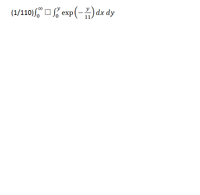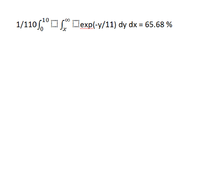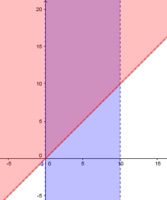Mathstudent7
New member
- Joined
- Aug 17, 2020
- Messages
- 14
a and b are two different components in an electronic system. Component a has durability of X and component b has a durability of Y. X and Y are independent random variables. Furthermore X is uniform with [0, 10] in months and Y is exponential distributed with expected durability 11 months. What's the probability that a breaks before b. Ie P[X<Y]
I know that because they are independent:
f(x, y) = f(x)f(y)
Ie I can get the probabilty function for f(x, y) but I have no idea what to do with it.
I know that because they are independent:
f(x, y) = f(x)f(y)
Ie I can get the probabilty function for f(x, y) but I have no idea what to do with it.




